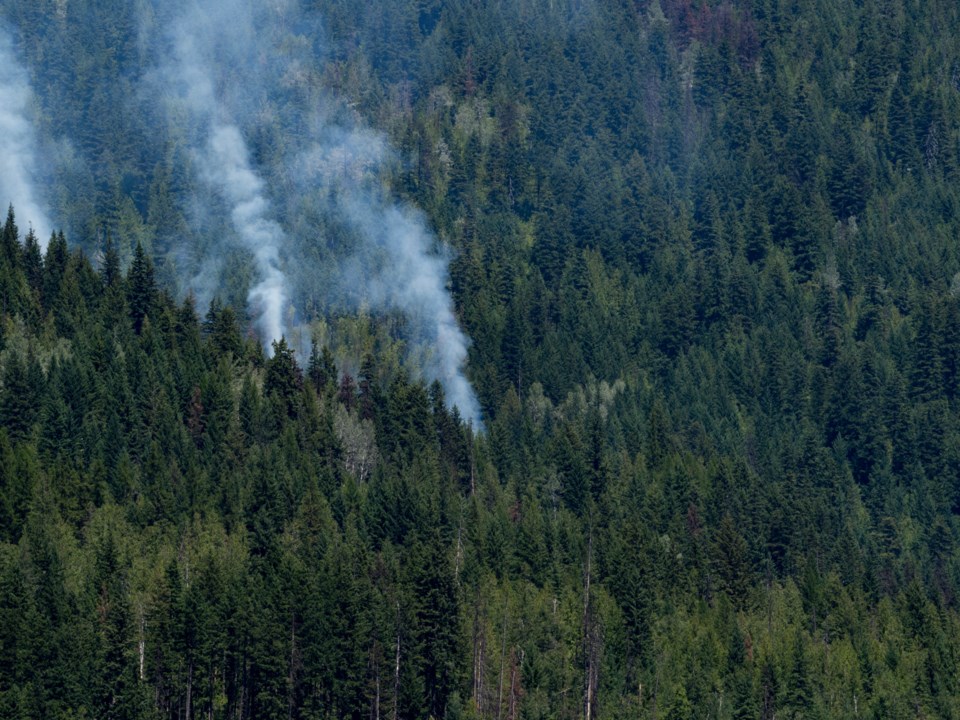It’s amazing the things you hear if you only stop to listen.
I learn so much by simply paying attention.
Sadly, many of the things I learn from casual eavesdropping are horribly misinformed.
For example, walking through the newly reopened Rainbow Park the other day, I overheard a shirtless beach bro confidently tell his two fellow shirtless beach bros the park rejuvenation cost a cool $10 million.
“No way!” and “that’s crazy!” the bros exclaimed. Then they all high-fived in solidarity with the beleaguered Whistler taxpayer and ran into the lake together (probably… I was already gone by that point).
Never mind the fact the park’s total budget was actually under $5 million, and all of it paid by provincial Resort Municipality Initiative funds.
It didn’t cost the taxpayers a dime, outside of maybe some staff time and the inconvenience of a closed park, but the incredulity of the shirtless bros was final.
I am not confident any of them read the newspaper (if they did, they might not be so misinformed in the first place), so chances are those two bros have already told two other bros the bad news—an exponentially multiplying pyramid of bad bro-to-bro (interbro?) info.
If you caught the bad info in your bro chain, rest assured: the new Rainbow Park was not quite that expensive to build.
Most of the things I overhear amount to non-sequiturs to me—snippets of gossip or conversation involving unfamiliar names, completely lacking in context—info that tends to go in one ear and out the other, if it registers at all.
But every now and then you hear a sentence that seems to take root in your brain.
Such was the case during another recent visit to Rainbow Park, in the days after it finally reopened in full.
“I wish the park was still closed,” I heard a fellow Whistler local proclaim, as they navigated the maze of beach towels and bodies with their dog.
After a second of consideration, I had to agree. Living close to Rainbow Park, I was able to frequent it often even during the later stages of the closure, taking the path around the fencing to the hidden back entrance at Barking Bay.
Most of the time you would find a few bodies sprawled about, maybe some dogs playing. A tourist family or two taking pictures on the dock. But for the most part, the park was a portrait of peace prior to its reopening on Canada Day weekend.
Now? Right back to tourist-town chaos.
But then, there’s a reason we get the luxury of millions of dollars in provincial funding to revamp things like parks—we are a tourist town, built to welcome millions each year.
Still, being a local in such a place can test your patience.
And so sometimes you find yourself wishing for things like park and road closures, or for a glitch in the variable highway messaging system warning people to turn back lest they be attacked by swarms of killer bees.
Whistler’s recent spate of hot weather only amplifies the effect. A little sunshine and the Valley Trail becomes a freeway overnight: gangs of oblivious roving tourists, eight to 10 strong, smiling slowly along on their rented e-bikes (a topic for another day, perhaps, but can we put a limit on these group numbers, please?); hoverboards and boomboxes blasting terrible techno; dogs, dogs, everywhere, and not all of them on-leash.
The effect seems far more pronounced this year—after a dismal Juneuary, Whistler residents and our thousands of daily guests are all craving that sweet, sweet Vitamin D, all at once.
It can be tempting to wish it all away—bemoan the loss of a once-quiet public park—but such efforts are counterproductive, at best.
We live in a tourist town. That tourists come here and enjoy themselves en masse is objectively a good thing, so long as they’re doing it responsibly.
But that last point is crucial at times like these, when the mercury spikes and the fire danger rating rises: it is incumbent upon all of us to ensure we are not starting fires, and staying vigilant for signs of smoke.
In that sense, Whistler’s robust tourist base can actually be one of its greatest defenses.
In interviewing various Whistler fire chiefs during fire seasons past, a common theme is evident: more people in the forests isn’t necessarily a bad thing (again, so long as they’re being responsible—which most are!).
“It’s early detection, early response, and actually prevention in the first place … So we’re lucky we have enough people out in the forest that do have eyes and ears and are very conscious, and we’re on it,” deputy fire chief Chris Nelson told Pique in 2021.
That same year, former fire chief John McKearney offered a similar sentiment.
“Everything is so dry … the best way to ensure our community is safe is to get on it as quick as possible, so we need our community people to keep bringing that forward,” he said.
“We are in the thick of it right now. We’re above extreme [fire danger] right now, and we need all eyes on deck here.”
As of this writing, Whistler’s fire danger rating is listed as high—but given the continued sunshine and high temperatures, it will hit extreme in short order.
So while we’re all out enjoying that sweet summer lifestyle in Whistler, slowly meandering the Valley Trail on our e-bikes in a solid line with nine of our best friends, let’s all do our best to preserve it for the next group of 10.
See smoke? In Whistler, report it by calling 911. Outside of Whistler, call *5555 on a cell phone or 1-800-663-5555.
The time for vigilance is now.
All eyes on the forests.




